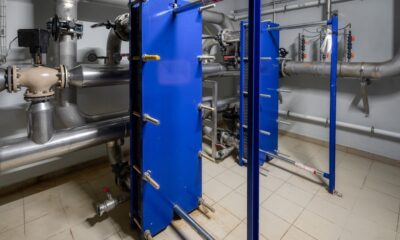

Energy
3 Cool Ways To Make Your Home More Energy Efficient
If you have a thoroughly modern home, chances are, it’s already quite energy efficient compared to those built a decade or two ago. After all, energy efficiency isn’t just a matter of practicality, costs saved, and environment-friendliness these days. It’s also a style statement, and something you’ll even hear people discussing at dinner parties. But what’s to be done if you have an older home that wasn’t built and fitted out with energy efficiency in mind? We found three relatively simple ways to update your home and reduce its energy consumption.
1. Start With the HVAC System
Check out your current HVAC system to determine whether it has a good Seasonal Energy Efficiency (SEER) rating. If it doesn’t, it’s time for a change. Consider going for ductless mini splits instead of the old-fashioned duct system. There are ductless mini splits with ratings of up to 30 SEER. If that doesn’t mean anything much to you, let’s just say that you’re looking at awesome energy efficiency.
As a bonus, they give you the ability to choose different temperatures for different spaces in your home – and they’ll save on duct maintenance costs. Plus, they’re so quiet, you’ll hardly notice them running.
Of course, there are other HVAC solutions that may suit you as well. Do a little research of your own to be sure you’re choosing what’s right for you, and not just something your local HVAC pros like to sell. The main criterion remains a good SEER rating.
2. Check Your Home’s Insulation
We’re still on the subject of cooling and heating and the energy they use. It’s a high-payoff area to begin if you’re looking at improved energy efficiency. Heating and cooling account for an average of 47 percent of household energy use, so cuts here will deliver the most significant results.
The Office of Energy Efficiency and Renewable Energy recommends inspection of insulation as part of a professional home energy audit. However, it also gives some tips and tricks on how to inspect it yourself. Just having some form of insulation isn’t necessarily effective. The thickness of the insulation is also an important factor, and even some newer homes can benefit from insulation improvements.
The same website also gives you access to a handy home energy saver tool that can help you to determine what changes need to be made and how much they’ll save you, both in terms of energy use and money saved. If you just want a home that’s kinder to the environment, the latter calculation won’t matter much to you, but most of us will be eager to see whether the changes we make will ultimately save us money. After all, it’s an investment, and investments should offer tangible benefits.
3. Windows and Doors
We began with the biggest power-guzzling system in your home and then we looked at walls and roofs that may make it work harder than it should – but let’s not forget windows and doors. This part of your three-pronged approach to energy saving isn’t expensive, and it can make a big difference to your home’s energy-efficiency.
The caulking around windows and doors is an obvious place to start, and renewing it can be a DIY job. Apart from using window film to insulate window panes, you can also consider getting insulated curtains. If you were thinking of updating your interior decor anyway, you now have a very practical reason for doing so.
While you’re at it, don’t forget the chinks under doors – new sweeps are a small investment and they really can make a difference to your energy bills.
Need More Energy Saving Ideas?
So far, we looked at the coolest (and hottest) energy saving tips because the lion’s share of your household energy use is likely to go to heating and cooling. Other areas to look at include your hot water heater, your lighting systems, and your household appliances.
Look for the Energy Star certification on home appliances and water heaters – old models use more electricity than necessary. If you’re still using old-fashioned incandescent lights, get with the trend and switch to LEDs – they’re just as bright and they’ll save on your energy bills. The actual luminaries are more expensive, but they last a lot longer, so it’s no sacrifice!
Reducing household energy consumption needn’t be an uncomfortable experience – so be on the lookout for new ways to save. After all, some really inventive minds are out there right now working on just that. It’s good news for homeowners, and there are sure to be even more advances in the pipeline.


 Environment10 months ago
Environment10 months agoAre Polymer Banknotes: an Eco-Friendly Trend or a Groundswell?

 Environment12 months ago
Environment12 months agoEco-Friendly Home Improvements: Top 7 Upgrades for 2025

 Features9 months ago
Features9 months agoEco-Friendly Cryptocurrencies: Sustainable Investment Choices

 Features10 months ago
Features10 months agoEco-Friendly Crypto Traders Must Find the Right Exchange





























